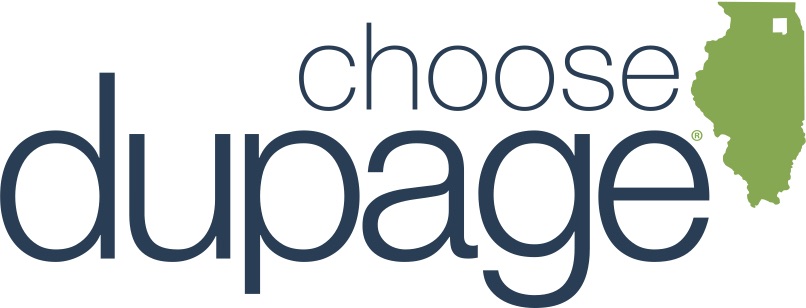In DuPage County, Scientists Use Supercomputers And X-Rays To Tackle Coronavirus

As the race for coronavirus therapies and a vaccine speeds up, the spotlight is on DuPage County, Illinois, and its two national laboratories — Argonne National Laboratory and Fermilab — that have been working tirelessly to help the country’s fight against the virus.
“Argonne is situated at the crossroads of not only DuPage County and Illinois, but America,” Argonne Laboratory Director Paul Kearns said. “We are closely located to multiple interstate highways and are a short drive to two international airports, which is critical for us as we conduct scientific collaborations across the nation and around the world.”
Argonne National Laboratory, which is owned by the Department of Energy and operated by the University of Chicago, is the largest government-funded research and development laboratory in the Midwest, with an operating budget of just under $1B. Along with employing thousands of DuPage County residents, Argonne has awarded contracts to Illinois-based businesses for a total of over $116B, with more than $40M awarded to small businesses in the state. Now, Argonne is working with national and global labs to help stop this worldwide pandemic.
DuPage County is home to 19 accredited colleges and universities, and has the highest educational attainment in Illinois, with nearly one in five residents holding a graduate or professional degree.
This highly educated workforce has attracted several major businesses to the area, including Fortune 500 companies like Navistar and Dover Corp.
Bisnow sat down with Kearns to learn more about how Argonne is working to combat the coronavirus locally and globally and how its location in DuPage has contributed to its work.
Bisnow: It's been reported that Argonne is fighting the coronavirus on multiple fronts. Can you tell me what that looks like?
Kearns: Our research is laying the groundwork for potential drug therapies and vaccines. The ultra-bright, high-energy X-rays provided by our Advanced Photon Source, which is essentially a stadium-sized X-ray microscope, allow us to view and understand the protein structures of the virus. Argonne researchers have determined nearly half of the detailed structures of COVID-19 that have been identified.
Along with that, Argonne is using artificial intelligence to screen billions of drug-like molecules. This AI-driven approach screens these compounds at least two orders of magnitude faster than traditional virtual screening. By using AI, Argonne can help reduce the current 18- to 24-month drug discovery time to two months or less. Additionally, Argonne scientists are integrating antimicrobial functions into N95 masks to expand their effectiveness or extend their service life while making them more comfortable, reusable and effective.
Bisnow: On a more local level, how is Argonne working to help Illinois communities slow the spread of the virus?
Kearns: With the help of Argonne’s supercomputers, scientists have been working with a highly accurate model of Chicago — down to every man, woman and child — simulating their behaviors, their times at home or at work, and who they associate with. Their actions played out over the course of an entire year.
The model simulates the infection process, even simulating interactions of people at home. It is so detailed that scientists can ask this simulated population to do different things such as wear masks and practice social distancing. The city of Chicago, Cook County and state of Illinois all use this model to inform top leadership for decision-making to help combat the pandemic.
Bisnow: Looking beyond the pandemic, what else is Argonne working on?
Kearns: Argonne conducts leading-edge basic and applied scientific research in virtually every scientific discipline. Some things we are working on include our unique scientific user facilities, like the Advanced Photon Source and Argonne Leadership Computing Facility, which attract more than 7,000 visiting researchers per year. Both are updated with the latest technology and they conduct studies aiming to make transportation more efficient, treat emerging diseases like COVID-19 and construct safer buildings.
Our battery technology already powers electric vehicles, and storage for the electric grid is our next goal. Meanwhile, our computer models simulate global and regional natural and man-made disaster scenarios, helping experts preemptively design responses to mitigate further devastation.
Bisnow: What do you like about being based in DuPage County?
Kearns: Our location in DuPage positions us to lead technology commercialization for the entire Chicago region. We partner with local businesses and have helped thousands of companies and entrepreneurs bring new innovations to market. The surrounding suburban communities also provide our local employees with safe neighborhoods and good schools. Our prime location and beautiful campus are major assets in our retention and recruitment efforts.
We also work to give back to the community. We are a major regional employer that provides thousands of DuPage residents high-paying jobs and worthwhile careers. We buy from local merchants, and we host thousands of national and international visitors annually, who stay at nearby hotels and shop at local small businesses.
Our collaborative research attracts even more businesses and economic activity to DuPage County.
This feature was produced in collaboration between Bisnow Branded Content and Choose DuPage. Bisnow news staff was not involved in the production of this content.

